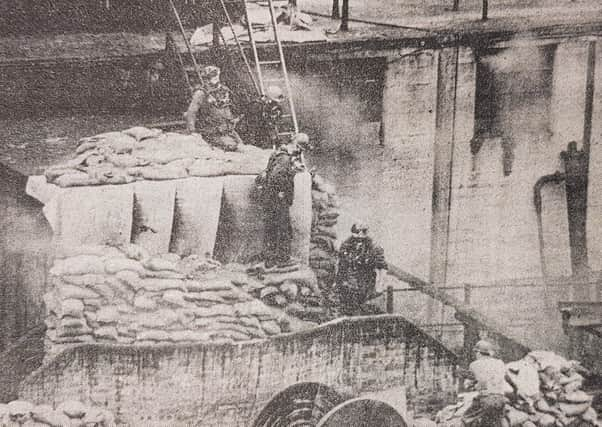Nostalgia: The darkest day at Fife’s Michael Colliery


The men were trapped underground as fire broke out in the Dysart Main Seam of the Michael Colliery at East Wemyss, and quickly spread.
Those who lost their lives in the disaster were: James Tait (41), Henry Morrison (35), Johnston Smith (60), Philip Thomson (64), Andrew Thomson (55), Alexander Henderson (41), Hugh Gallagher (61), James McKay (59) and Andrew Taylor (43).
Advertisement
Hide AdAdvertisement
Hide AdSix of the men died on Saturday morning whilst another five became trapped. Two of them had a miraculous escape, being rescued almost 12 hours after the outbreak, but three of their companions remained in the pit and, on Sunday afternoon, all hope of their rescue had to be abandoned.
The two miners who did escape owed their lives to the stamina of the younger man, and the experience of the older man. John McArthur (62), of Methilhill, had worked in the Michael for 45 years, and his knowledge of the underground workings enabled both him and John McEneany (45), of Kennoway, to bypass the fire area and conceal themselves in an inlet with a pocket of fresh air.
There were 312 men on the nightshift working 1800 feet below the surface and many of the 303 survivors had narrow escapes.
Some had to receive hospital treatment and many received first aid assistance at the pithead.
Advertisement
Hide AdAdvertisement
Hide AdWhen the alarm had originally sounded miners were led out to safety through smoke-filled roads, and many of them required oxygen when they reached the surface.
The men who died were making their way to the exits but were overcome by smoke only a short distance from fresh air.
Six bodies had been recovered by lunchtime on Saturday, and it was 12 hours after the alarm that McArthur and McEneany were brought out alive.
Little hope was held out for the three missing men, and at 3pm on Sunday, it was announced that the men had to be regarded as dead.
Advertisement
Hide AdAdvertisement
Hide AdThe fire broke out between 3 and 4am when the men were working on maintenance and repair work. After the alarm had been given the miners were led to safety. Many of them required oxygen after fighting their way through the smoke.
Eight of the miners were taken to Victoria Hospital for treatment.
This operation took about three hours and it was some time before officials were able to ascertain how many men were missing.
Five of the bodies recovered were only 80 yards from safety. Rescue teams rushed to the site and made efforts to put out the fire.
Advertisement
Hide AdAdvertisement
Hide AdFoam was pumped underground in attempt to quell the flames – the first time it had ever been used in a pit fire – and ventilation doors were opened, creating a current which would starve the flames of oxygen passing overhead.
In the aftermath the National Union of Miners called for a public enquiry in to the disaster and demanded emergency steps were taken to provide self rescue apparatus across the entire UK mining industry.
Just three days after the deaths of the nine miners, hundreds gathered at Kirkcaldy crematorium as a service was held for three of the men who died. There were similar crowds at Methilmill Cemetery, East Wemyss Cemetery, and Forman Church, Leven, as each of the men were laid to rest.
Comment Guidelines
National World encourages reader discussion on our stories. User feedback, insights and back-and-forth exchanges add a rich layer of context to reporting. Please review our Community Guidelines before commenting.